To mark National Day of Puppetry, CHM research center associate Annika Kohrt writes about the mother-son duo of Esther and Ernest Wolff, who established Chicago’s puppet opera scene in the 1930s.
Chicagoans in the first half of the 20th century loved to miniaturize things. From Narcissa Niblack Thorne’s Miniature Rooms to Frances Glessner Lee’s Nutshell Studies of Unexplained Death, Chicagoans were using miniaturization to relate to the burgeoning city and modernizing world around them. Even the Chicago History Museum was making miniatures in the 1930s: our seven dioramas illustrating Chicago’s history are the longest-displayed artifacts at the Museum.
The city’s arts and performance scene also saw a particularly delightful miniaturization: Puppet. Opera.
In 1932, the Great Depression bankrupted the Civic Opera Company, and the Lyric Opera didn’t begin operations until 1952. Filling that twenty-year gap with magic and playfulness was a company with a handful of opera records and a cast of hundreds of puppets, created and operated by Esther Theresa Wolff and her son, Ernest. The duo invented an intricate rod puppet, which was operated by puppeteers on wheeled stools underneath the stage.
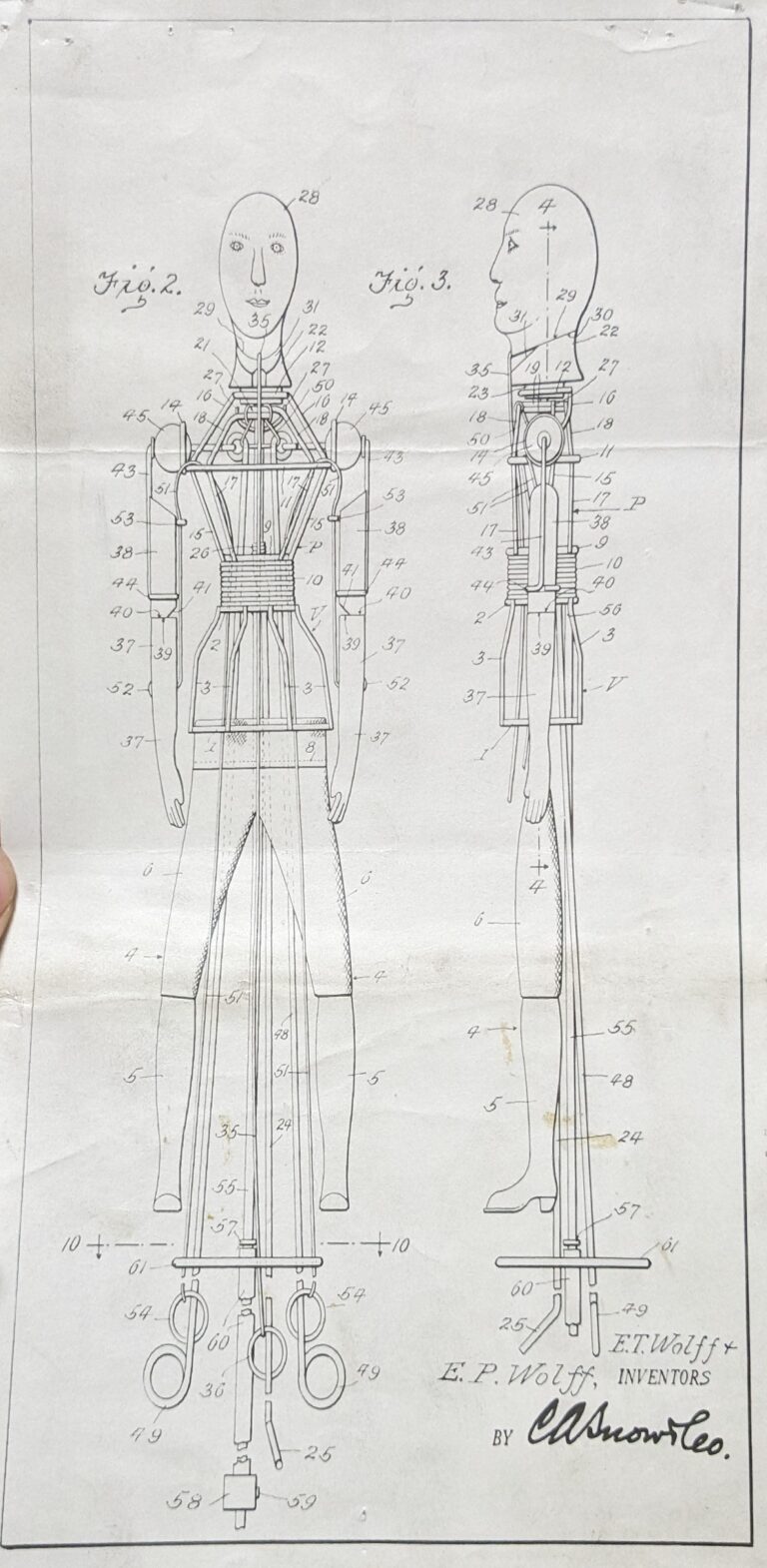
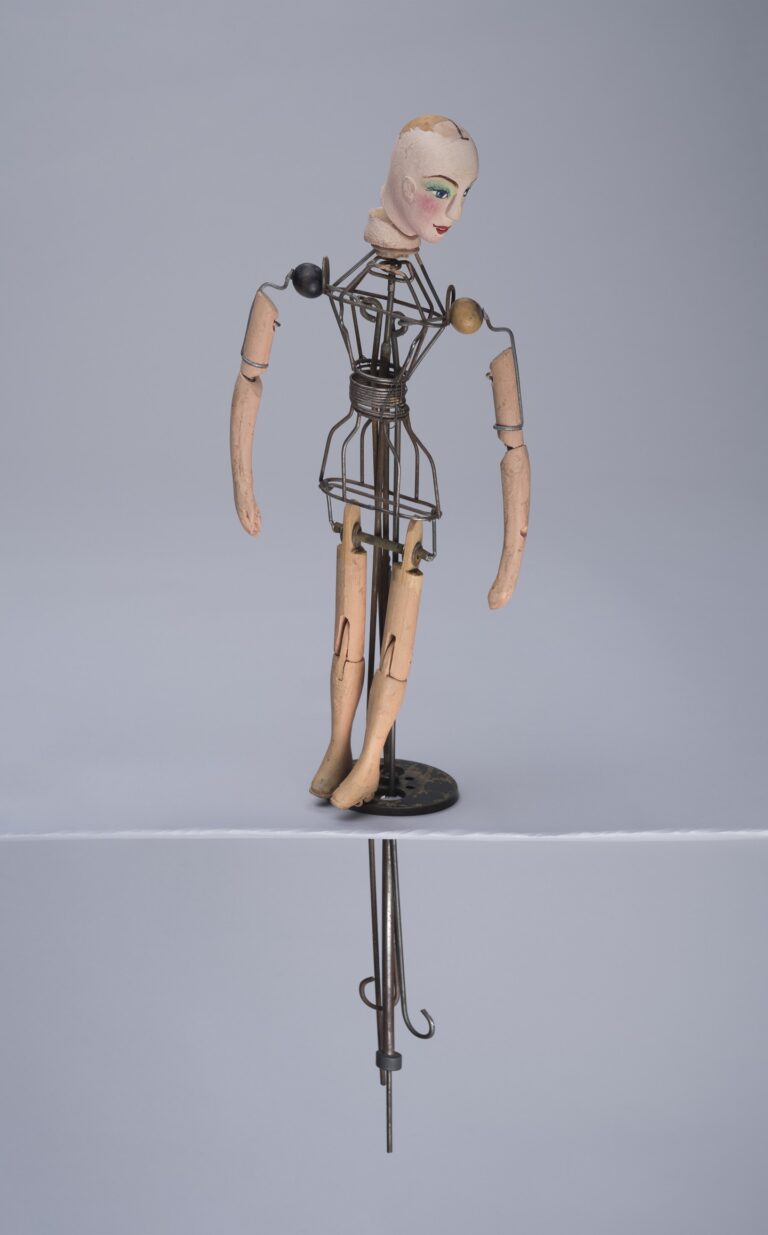
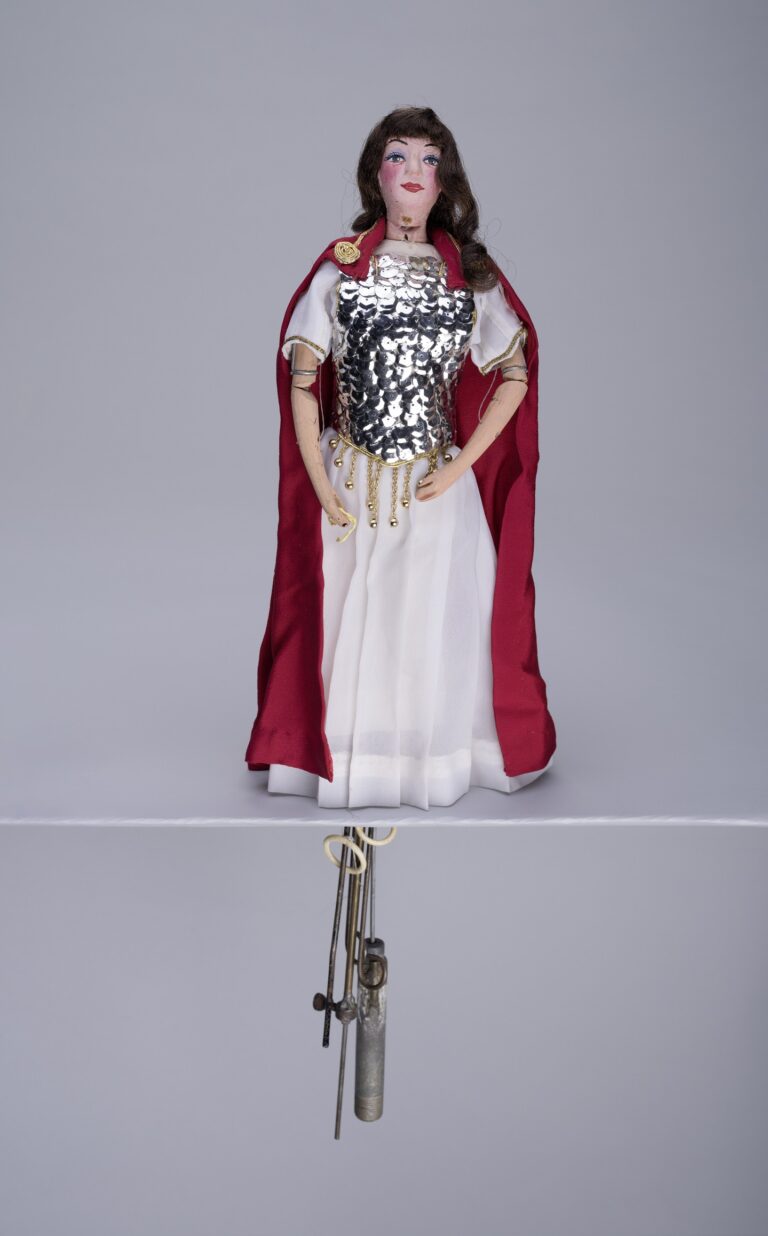
(From left) Ernest P. Wolff and Esther T. Wolff patent illustrations, CHM, Chicago Miniature Opera Company records [manuscript], ca. 1930-1971. Box 1. Bib#65102; undecorated wire puppet form constructed by Ernest P. Wolff for the Chicago Miniature Opera Theater, c. 1940, CHM, ICHi-175086; puppet depicting Brünnhilde from the opera Die Walküre; this puppet was included in Ernest P. Wolff’s Chicago Miniature Opera Theater, c. 1940. CHM, ICHi-175101
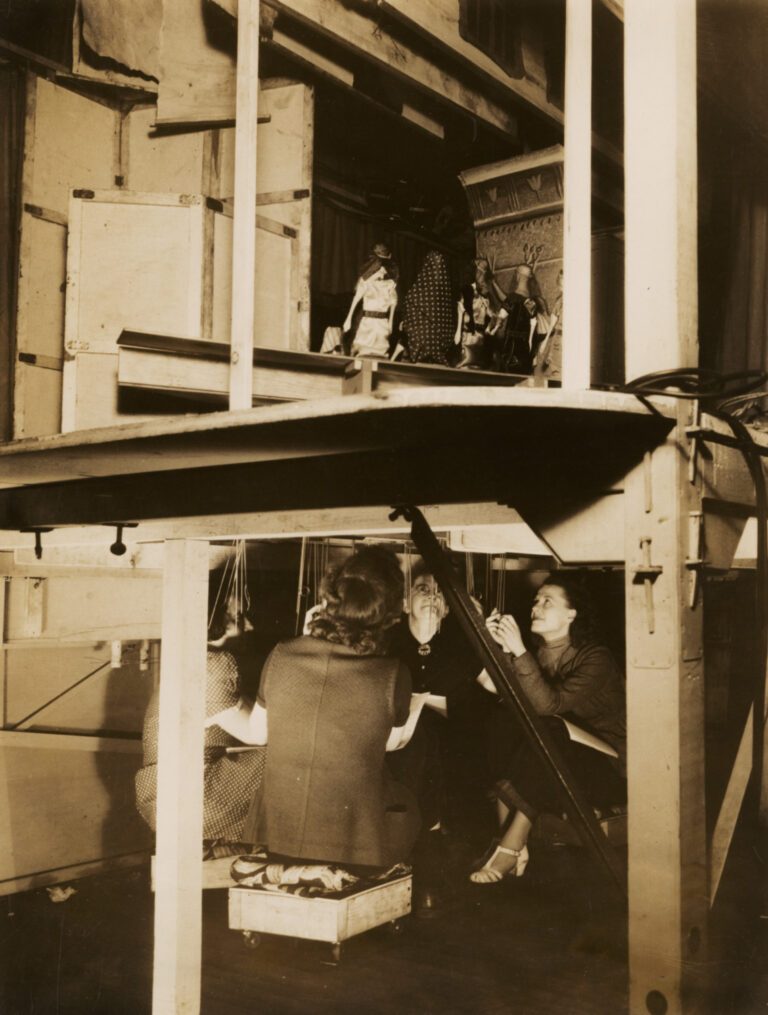
Victor Puppet Opera Troupe: (left to right) Evonne Moller, director of the ballet; Gretel Foerster; Mrs. E. Theresa Wolff, chief operator and mother of the director; and Roberta Haase, assistant, Chicago, c. 1942. CHM, ICHi-016388
Combining puppets and opera involved the creation of delightful characters along with the Wolffs’ marvelous talents. Mrs. Wolff was a widowed Czechoslovakian mother with a background in stage costuming. She was a huge opera enthusiast. CHM’s collection includes several scrapbooks of her programs and newspaper clippings of live Chicago operas, and later all the performances and reviews of the miniature opera. Well indoctrinated into a love of opera, Ernest was making miniature opera sets in a fruit crate in the family’s basement at age 12.
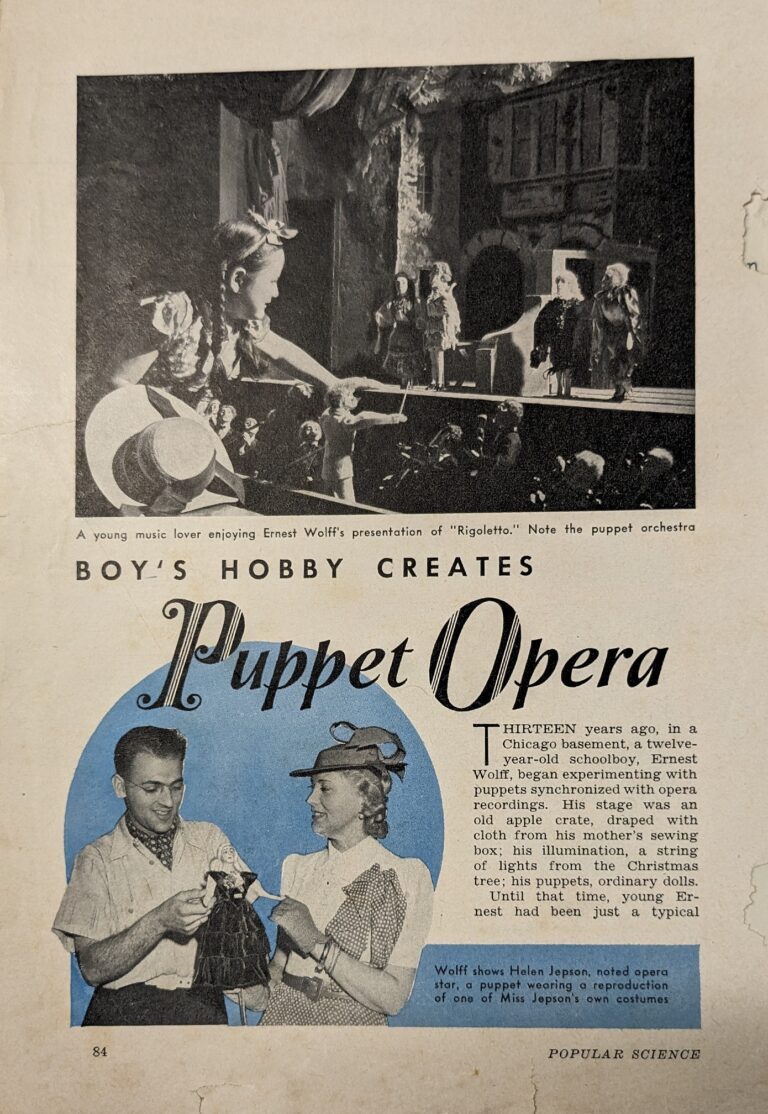
Clipping from Popular Science article by Arthur Stuart, April 1940; CHM, Chicago Miniature Opera Company records [manuscript], 1930–71. Box 1. Bib#65102
Soon, they were performing full shows around the Midwest to great reviews. The company had a residency at the 1939–1940 New York World’s Fair, where they gained national recognition. After the world’s fair, Ernest decided to serve in World War II. Before he left for Europe, Fredrick Chramer, owner of the Kungsholm Restaurant, saw a puppet performance, and asked to partner. In short order, the puppet opera was permanently installed at the Kungsholm. Fantastical matinees and evening shows were available for children and adults alike, alongside luxurious Scandinavian smörgåsbord dining.
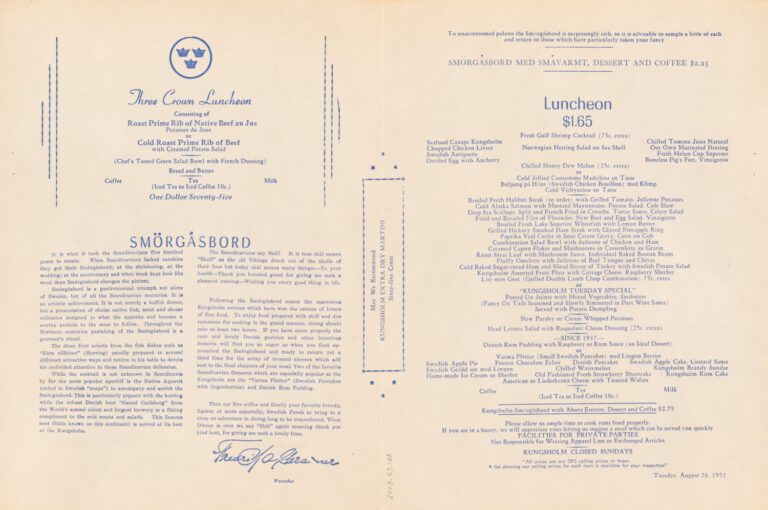
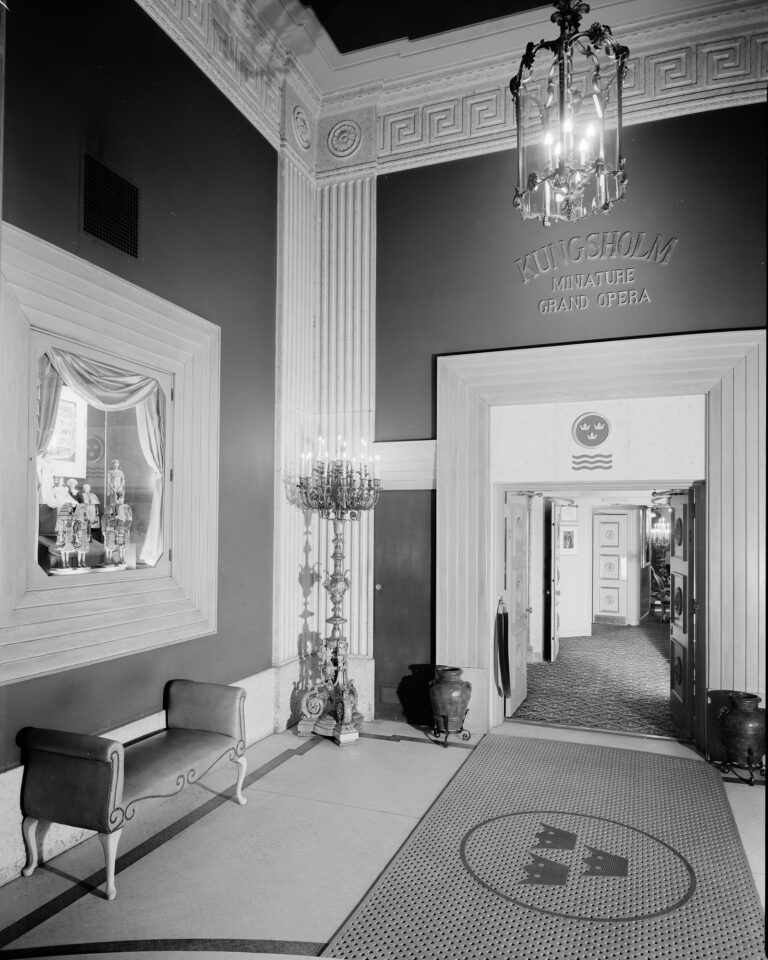
(From left) Kungsholm luncheon menu, July 2, 1952, CHM, ICHi-085972-003; interior view of the lobby of the Kungsholm Miniature Grand Opera, July 18, 1952, HB-15100-C, CHM, Hedrich-Blessing Collection
When Ernest returned to Chicago, it was to a successful puppet opera theater, but it was missing one crucial element: his name. He successfully sued Chramer for not crediting him, then took his settlement, and he and his mother started their own puppet theater once again. He made several TV appearances and had a brief residency at the Hyde Park Hotel, but the theater didn’t take off, and he quit puppetry to go into banking.
Meanwhile, the Kungsholm Miniature Grand Opera was evolving and had become a world-renowned landmark. It was the starting point for two puppeteers: Gary Jones, founder of Blackstreet USA Puppet Theatre, and Bill Fosser, founder of Opera in Focus in Rolling Meadows, Illinois, where you can still see these puppets perform. The Kungsholm puppet opera ultimately closed in 1971. Gary Jones purports that this was partly because of competition from the “real life” Lyric Opera and partly because of declining production quality after the Fred Harvey chain bought the Kungsholm in 1957.
At the Abakanowicz Research Center, which is always free to visit, you can view historic photos, programs, and menus from around Chicago. It’s a real smorgasbord of magic and delight—it might even inspire your next puppet show.
Comments